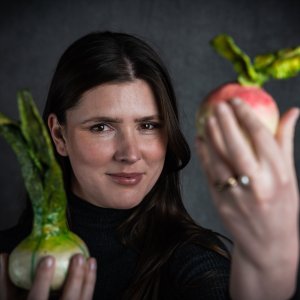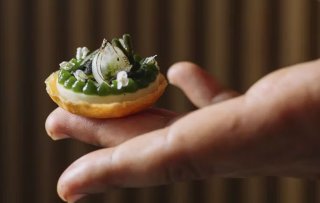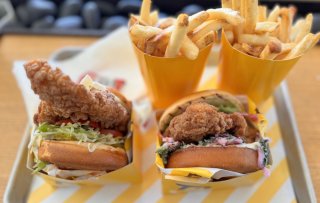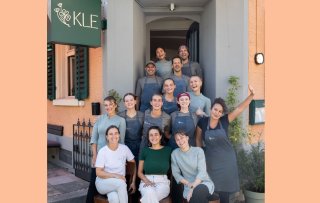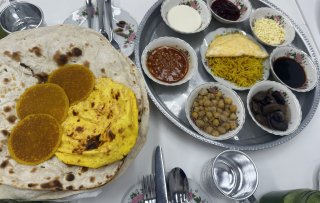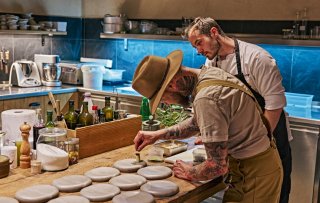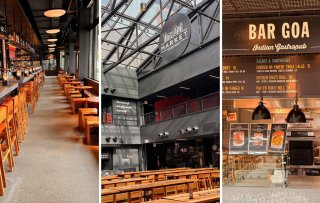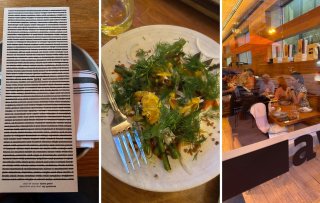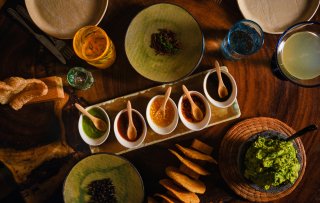There’s no way around it: our current approach to meat consumption is unsustainable. Not just for our own health but also for the health of our planet. That said, encouraging the entire world population to switch to a 100% vegan diet isn’t a realistic vision of the future. Nor is it necessary. If approached in the right way and on a different scale, there actually could be room for animals within a regenerative food system. A number of international top chefs are setting the example, choosing animals that have been raised responsibly and utilizing the entire animal, nose to tail.
Nowadays we can buy the best looking meat, the leanest chicken breast and the tenderest steak from anywhere, without a complete understanding of where that meat comes from, how the animal lived, and in what way they were slaughtered. This type of meat consumption is a fairly new modernization. Before World War II, meat was expensive, and the majority of the population had to work hard to obtain or afford it, often keeping and feeding animals themselves. As a result every part of the animal was used in a sustainable way, because nothing went to waste.
For some time now, chefs have been advocating for an approach where the entire animal is eaten, from nose to tail, in restaurants and at home. This is not a new message, but it is one we need to be open to, as more is known about the negative effect of meat consumption on our climate.
Nose to tail
Our meat consumption has increased substantially since the second half of the last century. The meat industry has impacted our earth’s climate, and factory farming has led to poor animal welfare. Before the meat industry created a market where we buy small pieces of meat at low prices in the supermarket, meat was viewed as valuable and the animals we ate were treated with respect. The nose to tail movement focuses on adjusting mindsets around unconscious consumption and toward a more sustainable lifestyle.
Today, there is a general notion that offal is unhealthy and gross. According to adherents of the nose-to-tail philosophy, nothing could be further from the truth. Consuming nose to tail provides more complete nutritional value than consuming only the muscle meat. Cartilage, skin and other meat parts work synergistically when consumed together. Sadly, while widespread knowledge is fading on how to prepare certain parts of an animal in a palatable way, top-level Michelin star chefs are trying to change that. A pioneer when it comes to nose-to-tail cooking is Fergus Henderson, who, back in 1995 (over 25 years ago!) opened St.John's* in London, blowing new life into cooking with offal in a refined flavorful way.
* The topic is not new: back in 2014 Food Inspiration published a magazine with the title Nose To Tail
Horse's head as an appetizer
During the two-day Chefs Revolution festival, organized by Jonnie and Thérèse Boer of the three star Dutch restaurant Librije***, top international chefs came together in Zwolle, the Netherlands. One of the speakers was Max Stiegl, an Austrian chef with Slovenian roots who is an outspoken advocate of the head-to-tail philosophy. The 42-year-old, who is well known as a chef at the countryside restaurant Gut Purbach, was at one point the youngest chef ever to receive a Michelin star, at age 20. For his menu, Stiegl only buys whole animals and uses each and every part. According to Stiegl, meat is far too valuable to waste; after all, each animal has died for us to consume it: "Respect for the animal requires that everything is used, from the pig's snout to his curly tail."
During a demonstration on stage at Chefs Revolution, Stiegl revealed a huge horse's head – much to the shock of the audience. Stiegl wanted to demonstrate how wonderful dishes can be made from an animal's head. To illustrate his message, Stiegl prepared a wafer-thin terrine of horse brains. But it’s not just the parts of the animal Stiegl prepares that are unusual; the animals he cooks with are also unconventional. For example, Stiegl likes to prepare beaver. "Why not? We eat turkey from farms that look like factories and pigs that are transported across half of Europe. And yet people think it's crazy to eat beaver, when they have lived a happy life in nature, have a healthy, natural diet and we know more about what area they’re from than from imported meat? I find that hypocritical."
Sustainable offal
Another speaker at Chefs Revolution was the young Viennese chef Lukas Mraz, from the two-star restaurant Mraz & Sohn**, which he runs with his father and brother. On stage, Mraz emphasized how we only eat a few parts of an animal, and just the most well known pieces at that. A shame, according to him, because there is so much more meat that is available, and is just as tasty.
Instead of ordering individual pieces of meat for his menu, Mraz – like Stiegl – only buys whole animals, and everything is used, with dishes switching out only when a particular part of an animal runs out. According to him, it is a sustainable way of working; after all, less animals are utilized in the process. Mraz: "If we want to serve all our guests the same piece of tenderloin, that means we have to slaughter dozens of animals; what happens to the rest of all their meat?"
Even more important, Mraz believes, is showing respect for the animal. "As humans we’re no longer used to killing an animal ourselves. The industry has made sure we don't even really know what animals look like. All the while we’re consuming more meat than ever. If you really respect animals you should let them live a good life. And when you do choose to slaughter them, consume them completely to prevent most of their parts from going to waste."
 Written by
Written by 
